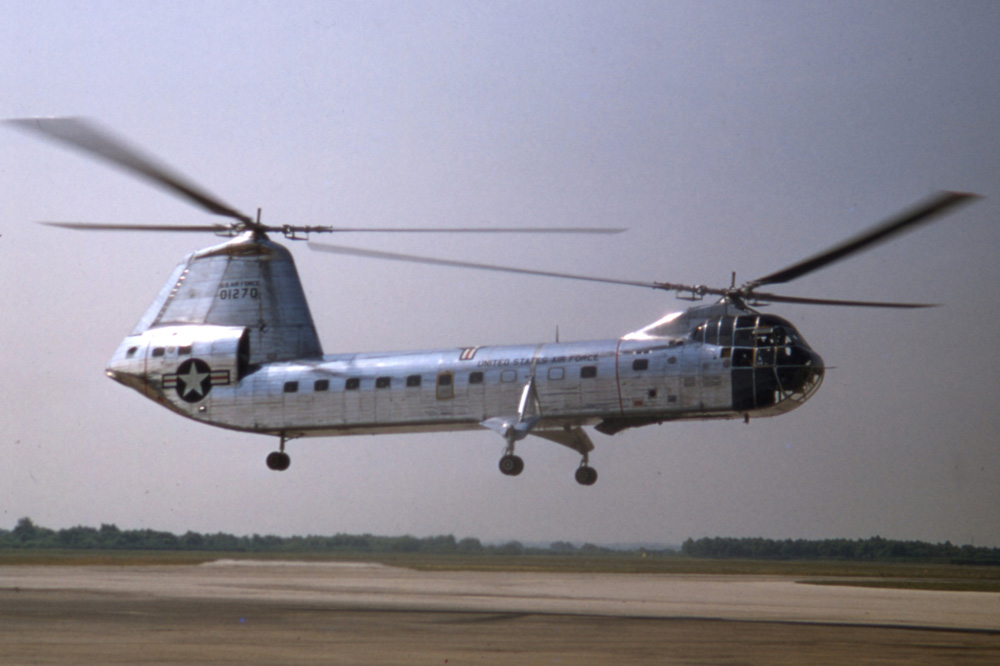

Test pilots Harold W. Peterson and George Callahan were killed.
It was determined that a bearing associated with an internal coaxial shaft supporting test data equipment had seized, causing the rotor shaft to fail.
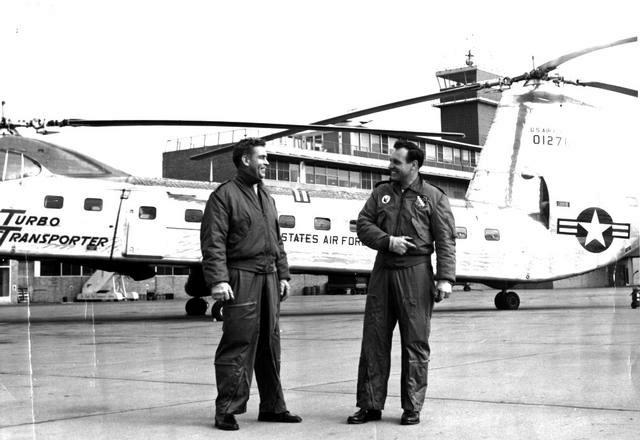
At the time, the YH-16 was the largest helicopter in the world. The United States Air Force intended it as a very-long-range rescue helicopter, while the U.S. Army expected it to serve as a heavy lift cargo and troop transport.
The YH-16A had a fuselage length of 78 feet (23.774 meters), and both main rotors were 82 feet (24.994 meters) in diameter. With rotors turning, the overall length was 134 feet (40.843 meters). Their operating speed was 125 r.p.m. Overall height of the helicopter was 25 feet (7.62 meters). The helicopter’s empty weight was 22,506 pounds (10,209 kilograms) and the gross weight was 33,577 pounds (15,230 kilograms).
YH-16 50-1269 was powered by two 2,181.2-cubic-inch-displacement (35.74 liter) air-cooled, supercharged Pratt & Whitney Twin Wasp E2 (R-2180-11) two-row, fourteen-cylinder radial engines with a Normal Power Rating of 1,300 horsepower at 2,600 r.p.m. at 8,000 feet (2,438 meters), and 1,650 horsepower at 2,600 r.p.m., for Takeoff.
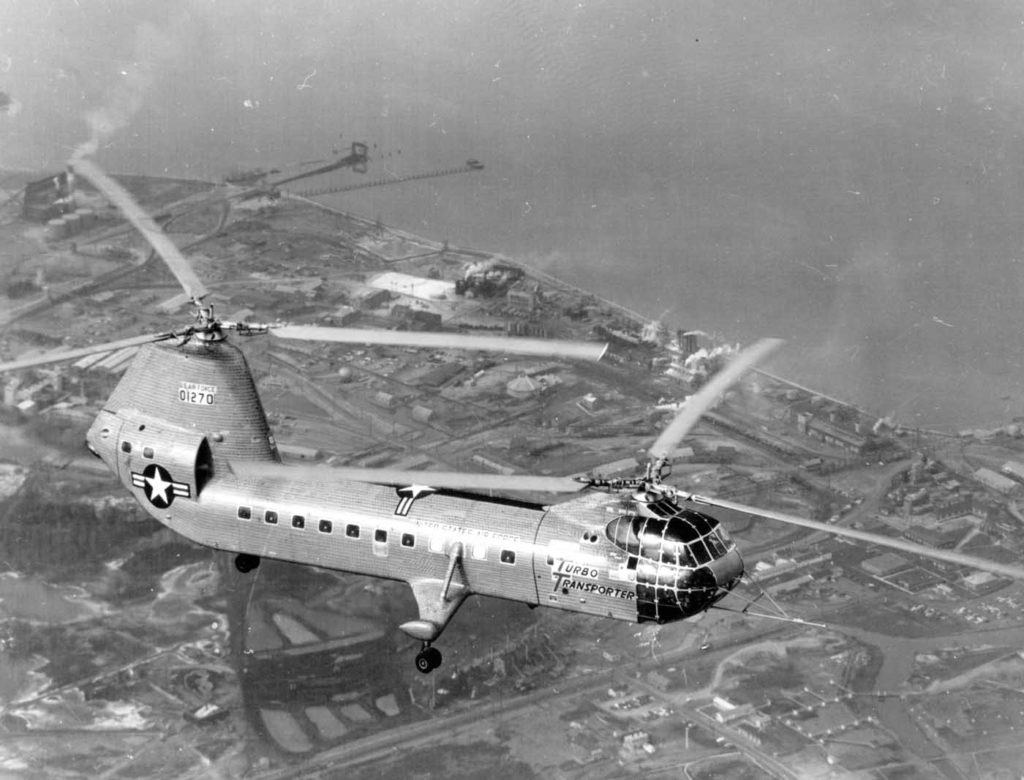

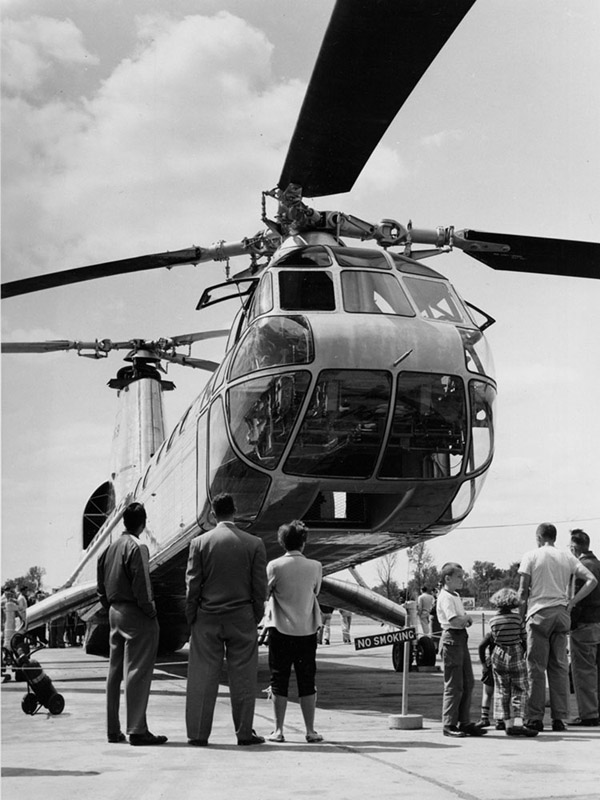
The cruise speed of the YH-16A was 146 miles per hour (235 kilometers per hour). In July 1955, Peterson and Callahan had flown 50-1270 to an unofficial record speed of 165.8 miles per hour (266.83 kilometers per hour). The service ceiling was 19,100 feet (5,822 meters) and the maximum range for a rescue mission was planned at 1,432 miles (2,305 kilometers).
After the accident, the H-16 project was cancelled.
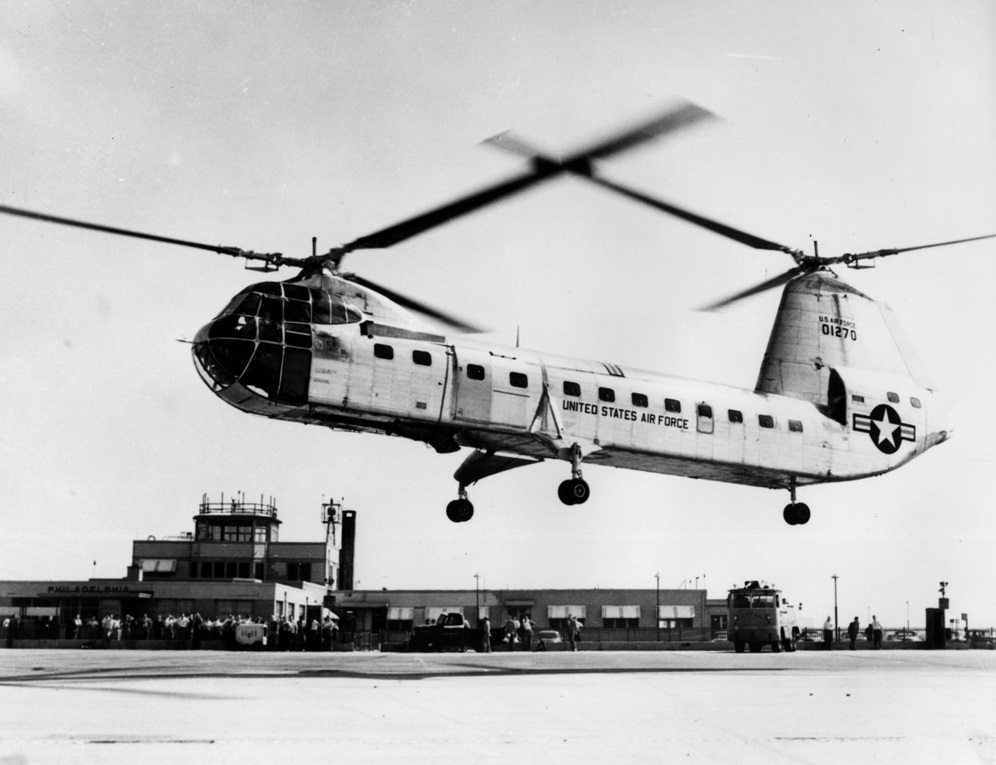
© 2017, Bryan R. Swopes